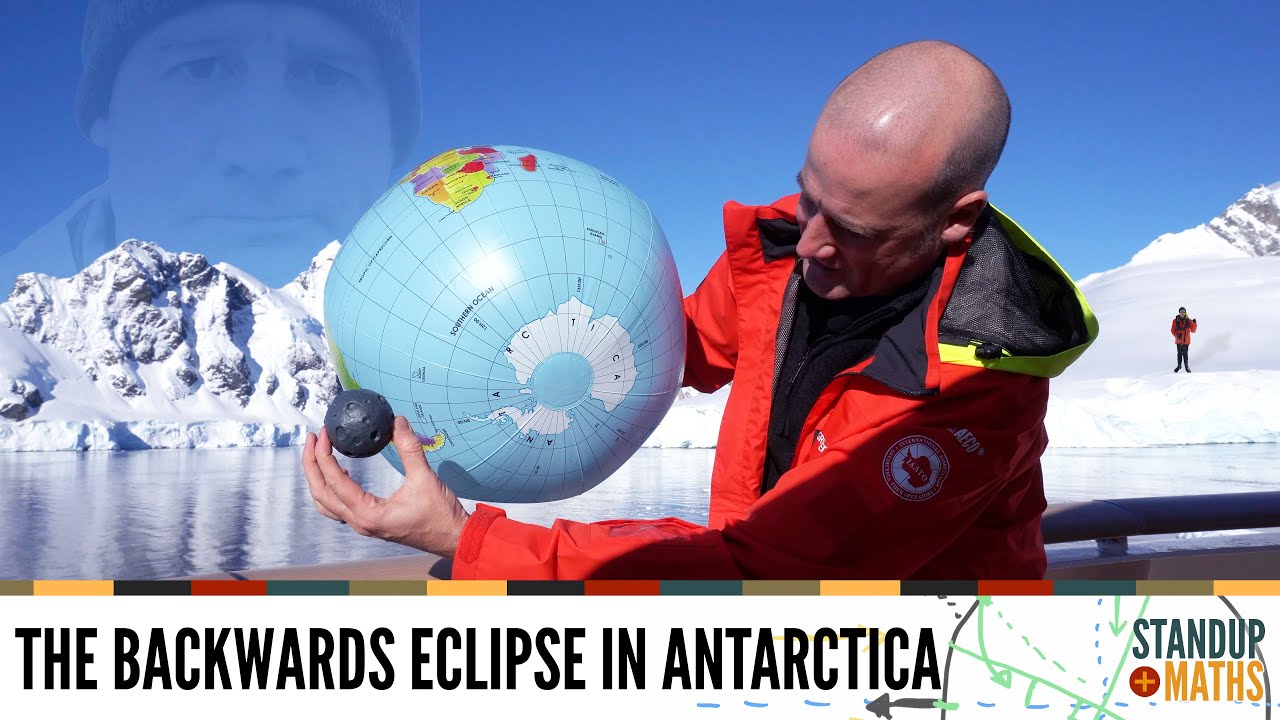Because the Moon’s orbit around the Earth is counter-clockwise when viewed from above the plane of the ecliptic, the path of totality of a solar eclipse from first to last contact of the Moon’s shadow with the Earth almost always runs from west to east. But not always! When an eclipse occurs near one of the poles and the Moon’s shadow, due to the inclination of the Earth’s axis of rotation with respect to the ecliptic (named the “obliquity of the ecliptic” by geocentric astronomers), “overshoots” the geographical pole and falls on the illuminated region on the other side of the pole, by geographical reckoning it runs from east to west. The Antarctic eclipse of 2021-12-04 was one of these rare “backwards” eclipses.
There are other rare and curious kinds of solar eclipses. A hybrid eclipse occurs when the apparent diameters of the Sun and Moon are so nearly identical that the Moon’s umbral shadow only reaches the Earth near the point on the globe closest to the Moon, resulting in an eclipse which is annular (Moon doesn’t completely cover the Sun) at both ends of the eclipse track and total near the middle. Hybrid eclipses account for around 2% of solar eclipses, which are rare in themselves—the last hybrid eclipse was on 2013-11-03 and the next will be on 2023-04-20. There will be only seven hybrid eclipses in the 21st century.
In a non-central eclipse the centre line of the Moon’s shadow misses the Earth, but a portion of the shadow cone grazingly intersects the Earth’s surface. The next non-central total solar eclipse will be on 2042-04-09, the only such event of the 21st century. This can only occur when an eclipse happens near sunrise or sunset in a polar region. Around 1.3% of solar eclipses are non-central.
